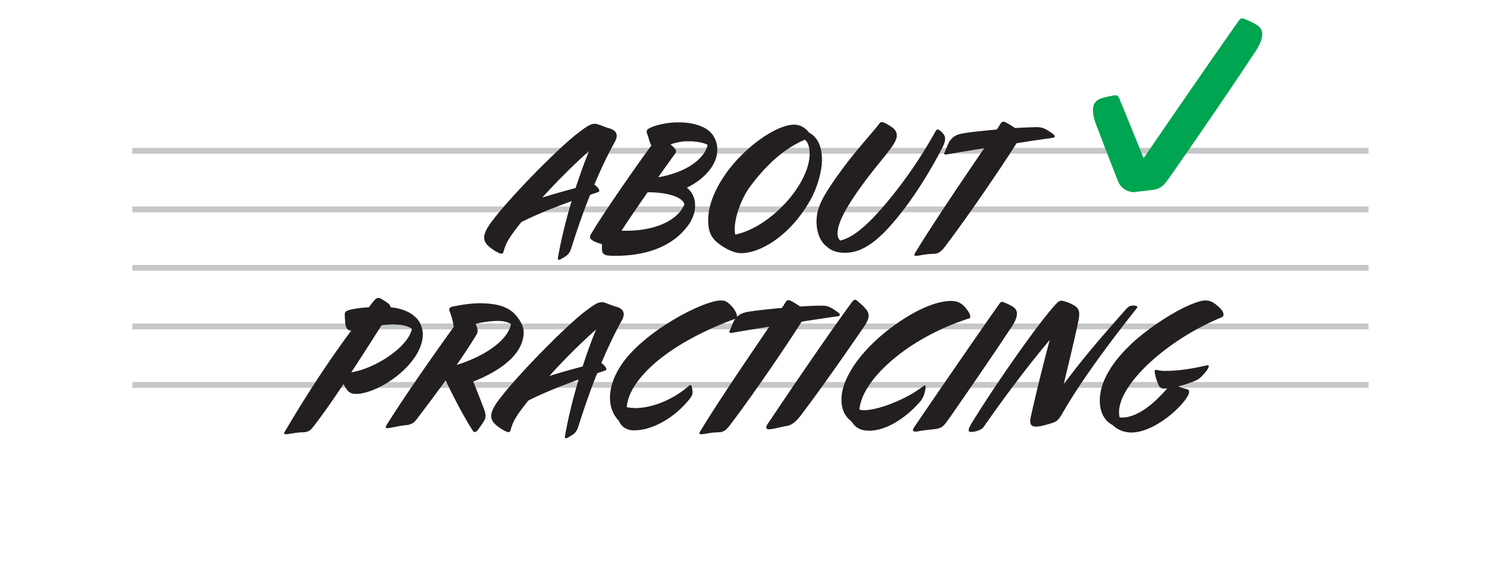What makes a good practice routine?
[Click here to download the article.]
Your practice routine is the structure you follow in each daily practice session. It's the tool you use to keep your practicing consistent, organized and moving in the right direction. When your practicing is like that, it's easier, more enjoyable, and more effective. It's just better. And when you practice better, you play better.
It's called a routine because it is routine. It's what you do every day. It doesn't change too much from day to day. You don't have to think about whether or not to do it. You just do it. It's called a practice routine because it's about practicing – not playing, not reading about playing, not watching videos about how to play, and not fooling around, even though those are all wonderful things.
It includes what you practice and how you practice. It also includes when you practice and where you practice and why you practice. And because it's your practice routine, it also includes who. (That's you!)
What makes a good practice routine?
Let's start with who - you. It's your routine. It should fit your personality and your life, and it should move you toward your goals. You make all the decisions about it; you get the glory when it works, and you have to fix it when it doesn't. It reflects your thinking, your idea of what practicing means, your idea where you're going and how to get there.
Next is what you practice. In a good practice routine, what is limited. You can't practice everything. You have to allow for enough time on each subject – song, scale, exercise, technique – to dig into it in a meaningful way. And you have to allow that amount of time in each session for days, weeks or months in order to master that subject. The more subjects you take on, the less attention you can give them and the less progress you'll make.
When is a big one. Practicing thrives on consistency. A good routine has you practicing every day, at the same time every day, for the same amount of time every day.
Two good things (at least) come out of this consistency. The first is that it makes practicing easier to do. The biggest obstacle to practicing is often making the decision to do it. Once you actually get started, things flow pretty easily; getting started in the first place is the trick. But if you always do it at the same time every day, then when that time comes, it feels like the decision has already been made. Getting started is easier.
The other thing consistency does is display your commitment. It reminds you, and proves to you, that you really are in this to get better.
The place where you practice should be comfortable. It should be free of distractions. It should have just what you need and not much else. This is important because there's more to good practicing than just knowing about music. You also have to get started and keep going. Having the right kind of place to practice makes these things easier. If the place is calming and attractive, it's easier to go there to practice. If you're comfortable, it's easier to practice longer. If you're not distracted, it's easier to concentrate. If you want your practicing to be easier, this is a great way to start.
Why and Who are connected, because only you can decide why you practice. Why? has two easy answers: “Because I enjoy it,” which is actually pretty good, and “To get better,” which is on the right track but vague.
To sharpen up that second answer, think about some goals. Goals can provide some helpful specifics. “I'm practicing so that I can play this piece for my family on Thanksgiving,” for example.
Our last consideration is how. This is a big subject. The devil is in the details, but the overriding principle is simple:
Practice Motion. Music will follow.
We practice so that we can play music. Playing requires motion. We move our bodies against our instruments to bring sound out of them. Without motion, there is no sound, and no music. At the most basic level, motion is all you can practice. It's all you can control. Every musical idea you will ever have must pass through your ability to move if you want it to be heard. So how do you practice? You practice motion.
Summary
What makes a good practice routine?
It fits your personality and your life.
You enjoy it, and it helps you get better.
You follow it every day, at roughly the same time, for roughly the same amount of time every day, in the same well-thought-out place every day.
It changes slowly.
It includes goals you have set for yourself, and it moves you towards them.
It limits the subjects you practice to a manageable number.
It focuses your attention on motion.
